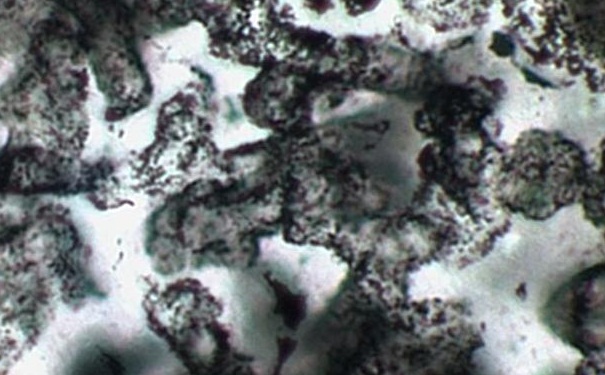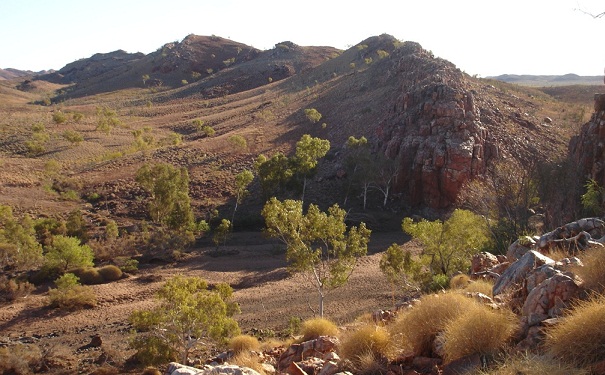
The protective tubes that housed the cells. Image: David Wacey

The field location of the microfossils. Image: David Wacey
Microfossils from the Pilbara in Western Australia have extended the fossil record of sulphur-loving bacteria by 500 million years or more.
Researchers from the University of Western Australia (UWA) and Oxford University have unearthed the best preserved sulphur-based microfossils on Earth. The 3.4-billion-year-old fossils consist of carbonaceous cells, along with the protective sheaths that housed some of these cells.
The discovery provides strong evidence for early life on Earth subsisting on sulphur, rather than oxygen. “These are now the oldest well-preserved microfossils on Earth and the discovery bypasses much of the controversy that has surrounded previous, more poorly preserved microfossils of about the same age,” said postdoctoral research fellow the Dr David Wacey from UWA, lead author of the paper published in Nature Geoscience.
The rocks containing the microfossils also contained the mineral pyrite, which is an iron and sulphur-rich mineral: the first clue that the microfossils may have had sulphur-based metabolisms. “When we looked at thin sections of the rock under the microscope we saw that the microfossils and pyrite were very close together, in some cases pyrite was right on the walls of the microfossils.”
The researchers analysed the sulphur isotopes in the pyrite and found that much of the pyrite had a light isotope signature, consistent with it being formed biologically. The shapes and sizes of the microfossils were also similar to those of sulphur bacteria living today.
Some of the microbes would have fed off grains of pyrite, oxidizing the sulphur to produce sulphate. Others consumed the sulphate and dead organic matter, expelling hydrogen sulphide. The hydrogen sulphide could then combine with iron in the water to form small grains of pyrite, completing the sulphur cycle.
“Perhaps the biggest leap forward in our knowledge of the early Earth that this discovery provides is the missing microfossil evidence to confirm previous theories that Earth’s earliest life was sulphur loving. For the first time in rocks of this age we have discovered a whole ecosystem of microbes that were using different compounds of sulphur to survive,” said Dr Wacey.
The microfossils are also a step forward in our search for life on other planets. “It’s vital to know what the most simple life on our planet looked like, and how to unambiguously identify it, if we are to have any chance of identifying life elsewhere,” said Dr Wacey.
“Finding new targets to explore on Mars and eventually further afield is also important, for example our research highlights sandstone as an excellent potential target for finding primitive life.”






